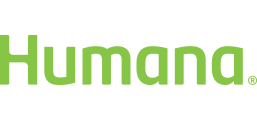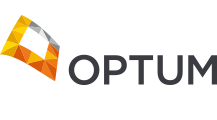Mirror Lake helps individuals struggling with club drug addiction and co-occurring disorders build a strong foundation for long-term recovery. Serving Tennessee, Mirror Lake is the leading provider of adult rehab.
Learn More About Club Drug Addiction Treatment
Learn More About Club Drug Addiction Treatment at Mirror Lake Recovery Center in Tennessee
MDMA (ecstasy), Rohypnol, GHB, and Ketamine are among the drugs used by teens and young adults who are part of a nightclub, bar, rave, or trance scene. Raves and trance events are generally night-long dances, often held in warehouses. Many who attend raves and trances do not use club drugs, but those who do may be attracted to their generally low cost, and to the intoxicating highs that are said to deepen the rave or trance experience. Street names: XTC, X (MDMA); Special K, Vitamin K (Ketamine); liquid ecstasy, soap (GHB); roofies (Rohypnol).
For the third and fourth quarters of 2003, hospital emergency department mentions were estimated at 2,221 for MDMA use, 990 for GHB, and 73 for Ketamine.
Date Rape Drugs
GHB and Rohypnol are predominantly central nervous system depressants. Because they are often colorless, tasteless, and odorless, they can be added to beverages and ingested unknowingly.
These drugs emerged several years ago as “date rape” drugs. Because of concern about their abuse, Congress passed the “Drug-Induced Rape Prevention and Punishment Act of 1996″ in October 1996. This legislation increased Federal penalties for use of any controlled substance to aid in sexual assault.
GHB
About the drug: Gamma-Hydroxybutyrate
Since about 1990, GHB (gamma hydroxybutyrate) has been used in the U.S. for its euphoric, sedative, and anabolic (body building) effects. It is a central nervous system depressant that was widely available over-the-counter in health food stores during the 1980s and until 1992. It was purchased largely by body builders to aid in fat reduction and muscle building. Street names include “liquid ecstasy,” “soap,” “easy lay,” “vita-G,”” and “Georgia home boy.”
Coma and seizures can occur following use of GHB. Combining use with other drugs such as alcohol can result in nausea and breathing difficulties. GHB may also produce withdrawal effects, including insomnia, anxiety, tremors, and sweating. GHB and two of its precursors, gamma butyrolactone (GBL) and 1,4 butanediol (BD), have been involved in poisonings, overdoses, date rapes, and deaths.
Ketamine
About the drug: Ketamine
Ketamine is an anesthetic that has been approved for both human and animal use in medical settings since 1970; about 90 percent of the Ketamine legally sold is intended for veterinary use. It can be injected or snorted. Ketamine is also known as “special K” or “vitamin K.”
Certain doses of Ketamine can cause dream-like states and hallucinations. In high doses, Ketamine can cause delirium, amnesia, impaired motor function, high blood pressure, depression, and potentially fatal respiratory problems.
Rohypnol
About the drug: Rohypnol (flunitrazepam)
Rohypnol, a trade name for flunitrazepam, belongs to a class of drugs known as benzodiazepines. When mixed with alcohol, Rohypnol can incapacitate victims and prevent them from resisting sexual assault. It can produce “”anterograde amnesia,”” which means individuals may not remember events they experienced while under the effects of the drug. Also, Rohypnol may be lethal when mixed with alcohol and/or other depressants.
Rohypnol is not approved for use in the United States, and its importation is banned. Illicit use of Rohypnol started appearing in the United States in the early 1990s, where it became known as “rophies,” “roofies,” “roach”, and “rope.”
Abuse of two other similar drugs appears to have replaced Rohypnol abuse in some regions of the country. These are clonazepam, marketed in the U.S. as Klonopin and in Mexico as Rivotril, and alprazolam, marketed as Xanax.
MDMA (Ecstasy)
About the drug: MDMA (Ecstasy)
MDMA (3-4 methylenedioxymethamphetamine) is a synthetic, psychoactive drug chemically similar to the stimulant methamphetamine and the hallucinogen mescaline. Street names for MDMA include “ecstasy,” “XTC,” and “hug drug.” In high doses, MDMA can interfere with the body’s ability to regulate temperature. On rare but unpredictable occasions, this can lead to a sharp increase in body temperature (hyperthermia), resulting in liver, kidney, and cardiovascular system failure, and death. Because MDMA can interfere with its own metabolism (breakdown within the body), potentially harmful levels can be reached by repeated drug use within short intervals.
Research in animals links MDMA exposure to long-term damage to serotonin neurons. A study in nonhuman primates showed that exposure to MDMA for only 4 days caused damage of serotonin nerve terminals that was evident 6 to 7 years later. While similar neurotoxicity has not been definitively shown in humans, the wealth of animal research indicating MDMA’s damaging properties suggests that MDMA is not a safe drug for human consumption.
According to the Monitoring the Future (MTF) survey, NIDA’s annual survey of drug use and associated attitudes among the Nation’s 8th-, 10th-, and 12th-graders, 12th-graders reported significant declines in lifetime MDMA use and perceived availability of the drug in 2005. Perceived harmfulness in occasional MDMA use declined significantly among 8th-graders, from 65.1 percent in 2004 to 60.8 percent in 2005.
Another national survey, the National Survey on Drug Use and Health, reported 450,000 current ecstasy users in 2004, which is similar to the number reported in 2003. Past year ecstasy use declined from 3.7 percent in 2003 to 3.1 percent in 2004 among young adults aged 18 to 25. Approximately 607,000 Americans used ecstasy for the first time in 2004. The majority of these new users were 18 or older, and the average age was 19.5 years.
These data are from the annual Drug Abuse Warning Network, funded by the Substance Abuse and Mental Health Services Administration, DHHS. The survey provides information about emergency department visits that are induced by or related to the use of an illicit drug or the nonmedical use of a legal drug. The latest data are available at 800-729-6686 or online at www.samhsa.gov.
These data are from the 2005 Monitoring the Future survey, funded by the National Institute on Drug Abuse, National Institutes of Health, DHHS, and conducted annually by the University of Michigan’s Institute for Social Research. The survey has tracked 12th-graders’ illicit drug use and related attitudes since 1975; in 1991, 8th- and 10th-graders were added to the study. The latest data are online at www.drugabuse.gov.
“Lifetime” refers to use at least once during a respondent’s lifetime. “Annual” refers to use at least once during the year preceding an individual’s response to the survey. “30-day” refers to use at least once during the 30 days preceding an individual’s response to the survey.
NSDUH (formerly known as the National Household Survey on Drug Abuse) is an annual survey of Americans age 12 and older conducted by the Substance Abuse and Mental Health Services Administration. Copies of the latest survey are available at www.samhsa.gov and from the National Clearinghouse for Alcohol and Drug Information at 800-729-6686.”




